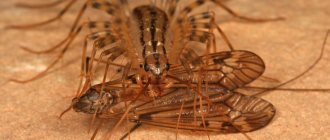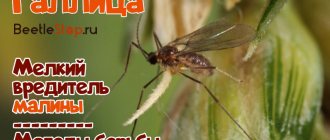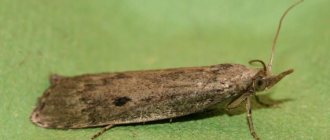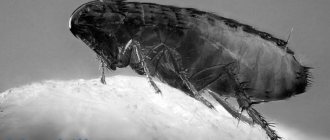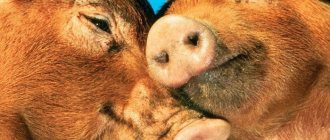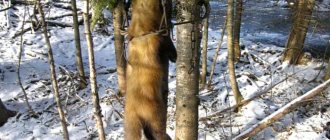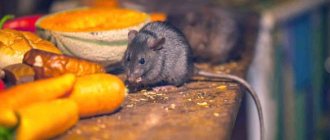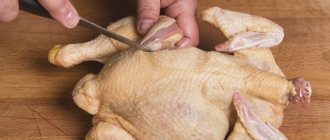- October 25, 2018
- Miscellaneous
- Ekaterina Gordeeva
Residents of villages are familiar with the problem: they woke up in the morning, went to the chicken coop, and there was darkness and horror. Chickens lie strangled. Some are beheaded, some are whole. And from others there were bones and a bunch of feathers. Not the most pleasant sight.
So what should I do? How to catch someone who strangles chickens? Who could it be? We'll talk about this in more detail in the article.
Ferret is a dangerous animal
One of the worst enemies of poultry is the forest polecat. For most people, a ferret is a cute pet. A cute pet with the habits of a cat and the character of a dog. But is it really so?
The forest ferret is an animal that strangles chickens. In one raid on the chicken coop, he is capable of strangling a huge number of them. He will eat one or two and destroy the rest. The ferret attacks the chicken and strangles it with its paws. As soon as the victim stops resisting, the beast loses interest in her.
The ferret acts on instinct. Does the chicken run, fuss and resist? He is interested in her as prey. The bird is dead and therefore there is no resistance? The ferret leaves her and begins searching for a new victim.
This animal is not large - 40-45 centimeters. Very cunning and dexterous. It usually gets into the chicken coop through a tunnel. If the owner finds a hole near the walls of the room, it means that a ferret is visiting the “chicken kingdom”.
The basis of the diet
What does the marten eat in its habitat? The main food in its diet is voles. The predator eats them not only during the warm season. The animal also catches voles in winter. Moreover, in the winter diet of the predator, their number decreases only by insignificant percentages. This indicates the fact that even a meter thick snow cover is not a serious obstacle for the marten when pursuing its victims. In those years when there are especially many voles, the forest predator is the most well-fed. At the same time, its daily range is reduced to a minimum.
How to fight?
How to protect a bird from an animal that strangles chickens? In our case, a ferret. Using a trap or trap. You can use a rat trap, or you can make your own.
For this we need:
- Aluminum bucket. Plastic is lighter, and a ferret is quite capable of chewing through it.
- Two-liter plastic bottle.
- Bait (beef, lamb or chicken meat).
We make a trap like this:
- Cut off the bottom and neck of the bottle.
- We put bait in one part of it.
- We put it on the edge of the chair.
- We put a bucket under the chair.
When the ferret reaches for the tasty treat, his weight will outweigh the bottle. And the uninvited guest will fall into the bucket. The disadvantage of this trap is that it does not close on its own. The owner of the chicken coop will have to stay in the house at night in order to have time to close the bucket with the ferret.
Someone catches the pest, armed with thick gloves and an old coat. But they throw a coat on the animal, and then grab it with gloved hands. But the ferret is a fast and agile creature. It is not always possible to catch him this way.
What to do with a caught pest? Ideally, take it out into the forest and release it into the wild. Destroying is not entirely humane.
Folk methods of struggle
Important! Folk measures against polecats, martens, and weasels are sometimes used by small farm owners, but there is no official confirmation of the effectiveness of such protection.
It is recommended to lubricate the surface of the walls of the building with tar. The substance should repel predators, but not all animals are afraid of the tar smell. If the foundation of the building is not sufficiently strengthened, the ferret will dig, bypassing the area with tar.
Be sure to read:
How to make a chicken feeder: drawings, dimensions, examples from wood, plastic bottles and pipes
There is an opinion that goat skin drives away ferrets with its smell. The smell of a goat is said to frighten all members of the mustelidae family. It is difficult to get rid of the animal this way. The method is more correctly classified as preventive measures for a well-insulated poultry house.
The folk method is to catch an animal using a strictly heavy coat or jacket. Special dexterity is required from a person. The animal must be quickly covered and wrapped in a coat.
The ferret should be pulled out by the withers, after putting on gloves and mittens.
It is unacceptable to involve children in this matter. Catching a ferret using a jacket or coat is dangerous and is not advisable. Wild animals carry many diseases, so it is advisable to avoid contact.
Weasel
Who else strangles chickens in a chicken coop besides a ferret? The charming weasel does not disdain this activity. Looking at this cute creature, it’s hard to believe that it is absolutely fearless. A weasel is capable of defending itself to the last, attacking a person and injuring him quite severely. And this despite the size of the predator. Her teeth are sharp, like needles.
This animal is very cruel. The weasel destroys its prey with “special cynicism.” It attacks with lightning speed, strangles, and then tears into pieces and eats. Having had enough, he continues his hunt. Therefore, the owner, coming to the chicken coop in the morning, will find many strangled birds.
The weasel is fast and agile. It is almost impossible to catch it on your own.
Appearance and features
Photo: What a marten looks like
Pine martens have a flexible, slender and long body covered with fluffy fur, about the size of a cat. They differ from minks and ferrets in their triangular muzzle and ears, have a light spot on the chest, and a yellow or white throat. The color changes from light brown to dark brown. If you see an animal with reddish eyes in the dark, don’t be afraid, this is a pine marten, not an evil spirit.
Sable is an unusually beautiful animal from the marten family, with a brown color that varies from light to dark. A distinctive feature from other species is the presence of fur on the soles, so it is easy to recognize by its tracks. Sable with a black color lives near Baikal, Yakutia and Kamchatka. It grows up to 50 cm in length and weighs up to 2 kg.
Kidus (sometimes kidas) is a first-generation hybrid of a pine marten and a sable, which interbreed in an adjacent habitat. Sometimes he looks like his mother, sometimes like his father - depending on genetic predisposition. It is a larger individual, with a very large tail and a yellow throat patch. If it looks like a marten, then it lives according to sable habits.
The stone marten is externally unlike the forest marten in the color of its neck and the shape of the pattern: it bifurcates and reaches the front legs. Although some representatives of Asian countries do not have it at all. The wool is quite hard, colored light brown. The nose is lighter than that of its relatives. Despite its smaller size, it weighs more: from one to two and a half kg.
Kharza is the largest and most decorated of all its relatives: the upper part of the body is 57–83 cm long, completely light yellow in color. The head and muzzle are black, the lower jaw is light and blends in with the body. The tail is brown in color, its dimensions are from 36 to 45 centimeters. The weight of the animal is up to 6 kilograms.
How to get rid of affection?
Is it possible to destroy someone who strangles chickens? Affection, in particular?
It's possible, just be careful. Let’s not forget that the animal is brave enough to stand up for itself. It is unacceptable to go at him with a bucket, coat and mittens, as in the case of a ferret. And he is more mobile than a ferret.
So what should I do? Tolerate losses? In no case. Buy a frame trap. It differs from the plate one in having a more durable mechanism. The trap is well attached, because there have been cases when the weasel ran away with it.
This method is inhumane. Instead of a trap, you can purchase a special trap for small predators.
Routes of penetration
How do martens, ferrets and weasels get into chicken barns? The easiest way for them to penetrate is through various cracks and holes. For example, a marten or weasel can crawl through a ventilation hole, open windows, or loosely closed doors. Since these small predators are quite graceful and flexible, they can squeeze into any, even the smallest, crack.
Animals often enter poultry houses through rat or mouse holes. Cracks and potholes in a building can also serve as an opening for them. If there are no cracks or holes, then predators dig up the foundation using sharp claws and fangs. They can also chew a hole in rotten boards.
To prevent furry hunters from entering the chicken coop, a number of actions must be taken:
- Install a mesh with small cells in the ventilation;
- Repair the building and seal all holes and cracks;
- If you are just planning to build a chicken coop, give preference to a concrete floor and a solid foundation;
- The walls must be strong, ideally made of brick;
- Fence the area or walkway adjacent to the chicken coop with a fine mesh net (mesh size - no more than 1.5 cm), deepening it 50-60 cm into the ground;
- If it is not possible to use brick to build a chicken coop, the walls can be lined with sheet iron;
- Clear the area around the barn - remove all boards and branches so that animals cannot hide in them.
You can make your own chicken feeder from a pipeline pipe or a plastic bottle.
Constipation in chickens can lead to disastrous consequences if the chickens are not helped in time. What to do in this case, read our article.
Paduan chickens will decorate any poultry yard. Read more about this breed here.
Marten
Who strangles chickens en masse at night? Farmers say they see something strange. Dark, very nimble and agile. It was like a shadow flashed through the chicken coop. And then she disappeared without a trace.
There are legends among people about the Chupacabra; supposedly this animal sneaks into a barn or chicken coop at night. Sucks blood from cattle and poultry. No one has ever seen the mythical creature. Only the shadow had to be seen. It will flash and disappear in the silence of the night... Has the chupacabra visited the chicken coop?
Alas, in our case it is an ordinary marten. That's who strangles the chickens! A cute animal, very dexterous and graceful. Visits human habitation not so often. The marten feeds on mice, squirrels and rats. When there is not enough food or there is simply no food, the animal goes to villages and villages. And destroys chickens.
The marten crushes the bird, then gnaws its throat and eats the carcass. Having had his fill, he continues to crush the chickens “in reserve.” It can drag the carcass with it if it crawls into the tunnel through which the predator passed.
Sweet treat
What does a marten eat? The animal loves honey very much. The predator visits the hollow in which wild bees live until it has completely eaten all the reserves. Near the tree where a wintering bee colony was discovered by a marten, you can see pieces of honeycombs and even the frozen striped workers themselves in the snow. Of course, not every marten finds honey. This is why he is nothing more than a random catch.
If in the summer the pine marten destroys nests built by earth bees or wasps, then as a special delicacy it eats insect larvae with great greed.
Foxy sister
Who strangles chickens, besides the predators listed above? The beautiful red fox will enjoy eating chicken meat. The cheat kills one or two chickens. And a few more are simply crushing. One gets excited, let's say.
She takes the killed chickens with her. Finds ways to do this. He also returns for those who have been strangled, but most often the owner of the poultry house is ahead of the cunning one. And she no longer gets anything.
When is the fox active? In winter, when there is a problem with nutrition. The cheats eat hares, field mice, and small birds. Winter time is a hungry time, so foxes come to villages and villages in order to profit from meat.
This animal hunts late at night or early in the morning, when it is least likely to encounter a person. The cheater is attracted to the site by the following odors:
- Fish. If fertilizer in the form of fish bones is scattered on the site, the fox will definitely visit it.
- Garbage. Sometimes owners put buckets of food waste outside the door. Foxes, attracted by the amber, look into the light. They happily rummage through buckets or garbage, looking for something edible. And in between times they’ll visit the chicken coop.
- Dung heaps. Chickens love to poke around in them. And the foxes know this. Therefore, they are attracted not so much by the smell of manure as by laying hens enthusiastically rummaging through it.
Social structure and reproduction
Photo: Marten
The rutting season for pine martens begins from late June to early August. Pregnancy lasts about 9 months, and cubs are born in the spring from 3 to 5 individuals. Initially, the female stays in the hollow with her brood all the time; after a month and a half, she begins to feed meat, when the milk teeth erupt, and after a month they climb trees.
In sables, the mating season is similar, but usually 2-3 babies are born. Males are very responsible towards the family and do not leave the females after the birth of offspring, protecting the territory and obtaining food. Small sables feed on milk for up to two months, and after two years they themselves start families.
Kidas look deprived in terms of creating families. It so happens that as a result of hybridization, males lose the opportunity to reproduce. They also don’t form flocks like harzas, which is why they are quite logically called loners.
Stone martens are very similar in social structure to forest martens. In the same way, relationships between females and males are built, pregnancy takes place and cubs are raised. In the wild, they live on average 3 years, the luckier or more successful ones - up to 10. In captivity, they often live up to 18 years.
Kharzas, despite their more collective activity, quickly separate after mating. The offspring lives with the mother until the next one appears, after which it leaves her. But often brothers and sisters stick together, which helps them survive in the harsh nature. When individuals become more independent, they separate.
What to do?
Get rid of the visitor. In addition to damaging the farm, the fox also spreads rabies. A sick predator can attack a person. Therefore, having barely noticed fox tracks, it is necessary to urgently take action.
The best way to get rid of the red cheater is a live trap. The thief remains alive by getting into it. The trap is taken away and the animal is released.
Nobody has canceled the traps yet. But this is inhumane.
A guard dog is the best option for scaring off foxes and other small predators. An Alabai or Caucasian Shepherd dog running around the area at night will not allow the sister fox to visit the area.
Rats
Who strangles chickens at night? More precisely, chickens and very young birds? It could be rats.
Quite rarely, rodents attack poultry. Hunger forces them to do this. These animals are extremely smart, and in a moment of danger they are able to rush at a person, defending their own lives.
How to protect chickens from them? Set traps for rats. If you are lucky enough to find a nest or hole in the chicken coop, you can use the old method. Break the glass bottle so that the neck remains intact. Champagne bottles are best; they have thicker glass. The sharp edges are pushed forward into the holes. The rat will cut itself on it and return to its place of residence. And there her relatives will finish her off.
Disturb the nest, get rid of the baby rats, if they are there. And with the mother rat, do as described above.
General characteristics of the predator
Ferrets belong to the mustelidae family of mammals. Ferrets have an elongated body and are particularly flexible and agile. These animals are excellent at climbing the tallest trees and digging deep holes. Males are slightly larger than females.
The habitats are very different, it depends on the type of animal. Ferrets often move closer to human habitation. There are usually two types of ferrets found in Russia - the steppe white and the forest black. Under favorable conditions, ferrets lead a sedentary lifestyle in their own territory. And only hunger can push them to human habitation, where there is always food for them.
The basis of any ferret's diet is food of animal origin. They hunt and eat birds, rodents, insects, reptiles and even poisonous snakes. A ferret will never miss a nest with eggs. He will drink them all and destroy the nest. Large individuals can become a real threat even to hares and muskrats.
Thanks to their agility and endurance, ferrets can pursue their prey for a long time. But, as a rule, they prefer to watch for prey near its own hole. The peak of hunting occurs at night, but if night hunting is not successful, the ferret will do it during the day. Ferrets are not attracted to plant foods.
